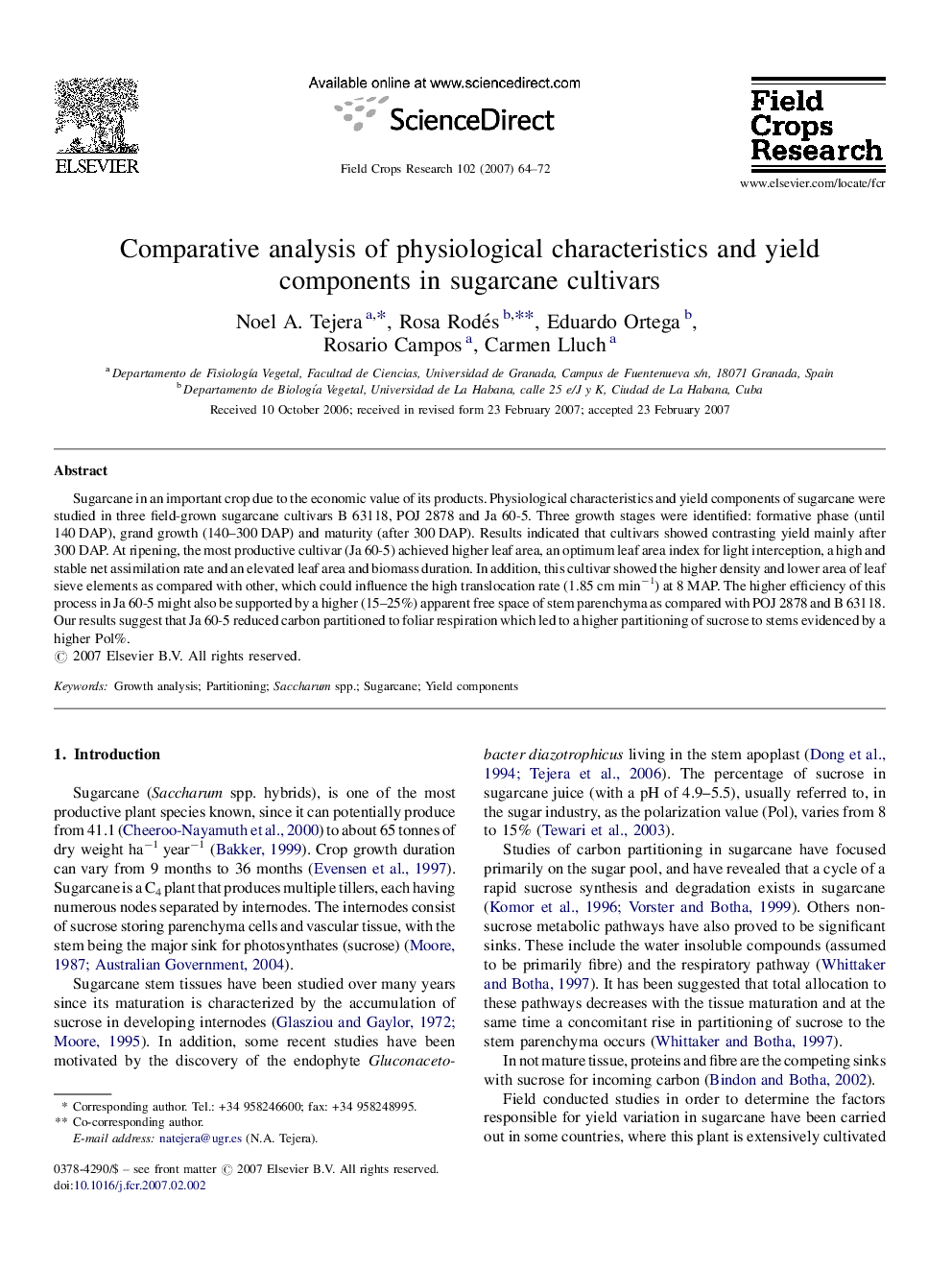| Article ID | Journal | Published Year | Pages | File Type |
|---|---|---|---|---|
| 4511642 | Field Crops Research | 2007 | 9 Pages |
Sugarcane in an important crop due to the economic value of its products. Physiological characteristics and yield components of sugarcane were studied in three field-grown sugarcane cultivars B 63118, POJ 2878 and Ja 60-5. Three growth stages were identified: formative phase (until 140 DAP), grand growth (140–300 DAP) and maturity (after 300 DAP). Results indicated that cultivars showed contrasting yield mainly after 300 DAP. At ripening, the most productive cultivar (Ja 60-5) achieved higher leaf area, an optimum leaf area index for light interception, a high and stable net assimilation rate and an elevated leaf area and biomass duration. In addition, this cultivar showed the higher density and lower area of leaf sieve elements as compared with other, which could influence the high translocation rate (1.85 cm min−1) at 8 MAP. The higher efficiency of this process in Ja 60-5 might also be supported by a higher (15–25%) apparent free space of stem parenchyma as compared with POJ 2878 and B 63118. Our results suggest that Ja 60-5 reduced carbon partitioned to foliar respiration which led to a higher partitioning of sucrose to stems evidenced by a higher Pol%.
